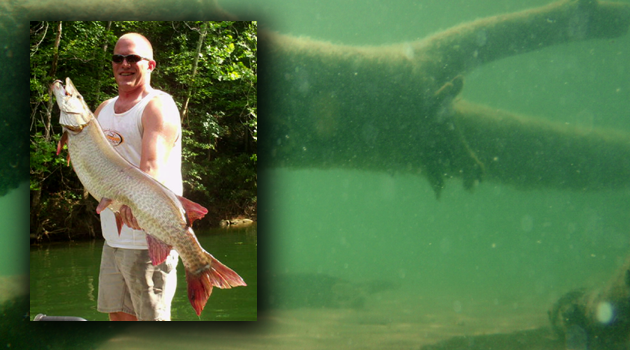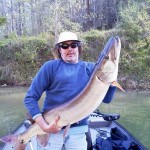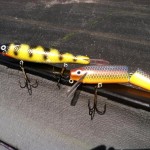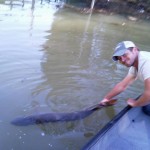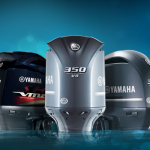By Cory Allen
Learning to fish laydowns is one of the fundamental lessons of feshwater fishing. An angler casting the shoreline comes to a tree that has fallen into the water. It’s been undercut by years of erosion. Now its root system sticks up like a tombstone, and its trunk extends beneath the water. Several feet out, waterlogged branches break the surface like fingers from a groping hand. These woody skeletons are every man’s structure, and every
predator’s ambush point.
The angler positions his boat near the tree, and then lobs in his crankbait. As the bait begins its descent, it disappears in a
boiling commotion. The angler reacts quickly, setting the hook and steering a hefty muskie clear of its limbs.
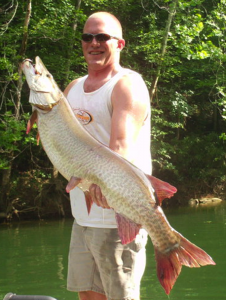
In life, trees are the very essence of existence embodied…they harness sunlight to produce oxygen that we breath, provide nutrients to the soil they’ve borrowed from when they fall and decay, and their structure itself serves as residence for nearly any imaginable form of terrestrial life…hell, their presence is synonymous with water, as if they are a bridge between the two worlds. An oasis in the desert is nearly always accentuated by the shade of a palm….yet in angling, I say to thee…. the only good tree IS A DEAD ONE!
Why this macabre perspective of the deciduous and coniferous? Because while trees serve the land in life, they best wait upon the water in death.
Consider the following
A tree growing on the shore may occasionally provide shade or “low hanging fruit” in the form of falling catalpas or other invertebrates as gifts to aquatic organisms. If a tree falls into the water, it’s nature’s way of creating ancillary topography.
Here’s an example of how acutely refined this process is, which is something I see all the time when fishing reservoirs. The best trees to fish consistently are ones defined by their angle of descent, with vertically standing being relevant based upon location. I’m talking laydowns here; a tree that has fallen and lays from the shore at a 30 degree angle or less more often than not is less productive than a 45 or more. Why is this so? It’s elementary. The tree is simply laying against the topography I.e structure already present…a sloping shallow bank makes a smaller degree sloping tree. A more steeply sloping bank creates a more steeply sloping tree. The greater the angle a tree has to it, the more relevant it is to creating an ecosystem and this to an angler seeking to interact with one because it serves more of a role to the aquatic environment.
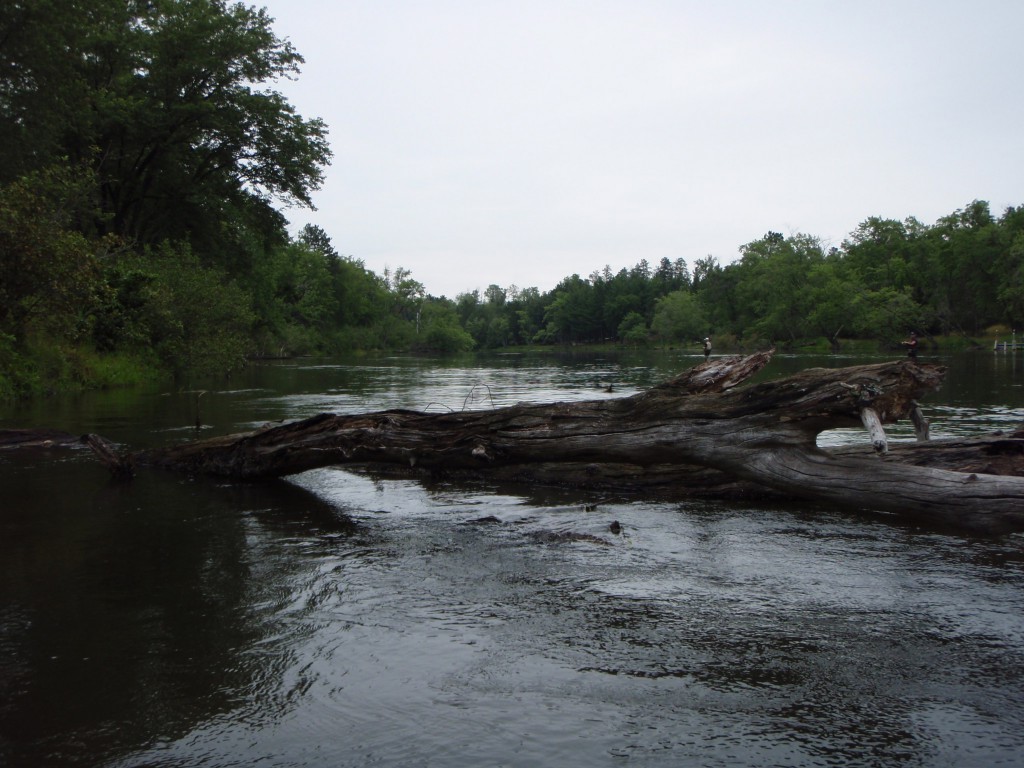
The most interesting of these instances is the laydown that nearly does a headstand. This is a situation resulting from shoreline erosion against a vertical bank, which is of course belying of deep water directly off the shoreline…inherently featureless through natural topography. So what does nature do? It lets the wind and waves erode away the lower support structure so that eventually the trees anchored to this precipice give way and fall directly below…virtually creating static, all-natural, biodegradable topography and forming an entirely new ecosystem that provides a direct path from shallow water to deep water. Voila…insta-fish.
So in this vein, let’s go so far as to say that there is nothing inherently attractive about a tree to a fish. Anytime someone says “Oh the Muskies are in the trees today!” I immediately hold up my imaginary binoculars and say “Well, I see a pileated pickerel up there in the woods…and there’s a walleyed warbler…but nope, no Muskies…” Yeah, a little smart ass, but you know the old chestnut about truth and jest…and surely do I jest to execute many an exposé.
Now it goes without question that yes, trees to varying degrees, provide habitat and thus angling opportunity for many species of pursuit including muskellunge, but only in understanding why can we begin to understand and eliminate unproductive trees and focus on the ones upon which “money grows on.” Believe it or not, as a guide, money DOES grow on a few of the trees I frequent, long after they’ve gone the way of the Dodo bird.
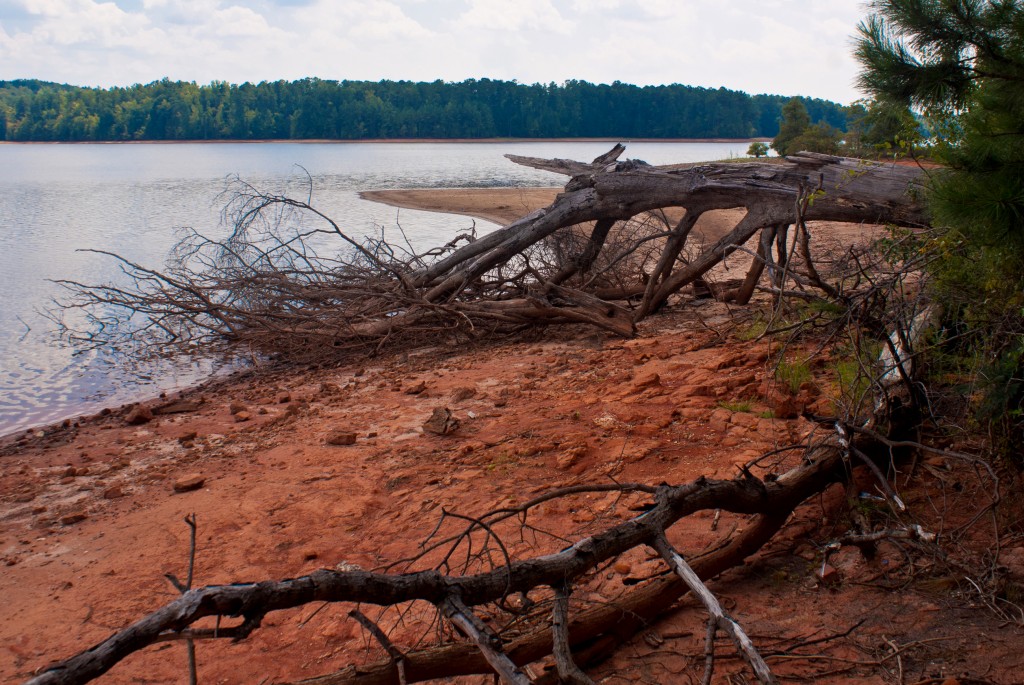
In essence, every tree should be treated not as an exclusive entity but as an ancillary topography. Not structure. Structure is something that is static and holds water, by the very definition of the man who coined the term, E.L. Buck Perry. Ironically though, it is structure that defines the productivity of wood in the water.
The approach to fishing trees should be no different than that which is used to fish “structure”… points, bars, saddles, etcetera, etcetera, etcetera….cover the top, cover the sides, and as always circumcise the tip.
I won’t insult your intelligence or impede your creativity by telling you HOW to do it. Hopefully by simply illuminating the natural role of trees in water as a post-mortem biosphere should be enough to change your perspective on how and where and why to fish them.
So when the next Arbor Day roles around, make up a t-shirt that says “The Only Good Tree Is a Dead Tree!”
Tree huggers nor Greenpeace supporters may not get it, but you sure will. The best jokes are the inside ones, anyway. Tight lines…
Cory Allen, 27, of Cookeville, Tennessee is the founder and lead guide of Stone’s Throw Adventures. Allen’s team of guides fish the waters throughout Tennessee and Kentucky, guiding on a year-round basis, and offer their clients a wide variety of boat and wading trips for all species of gamefish. http://www.stonesthrowadventures.com/


